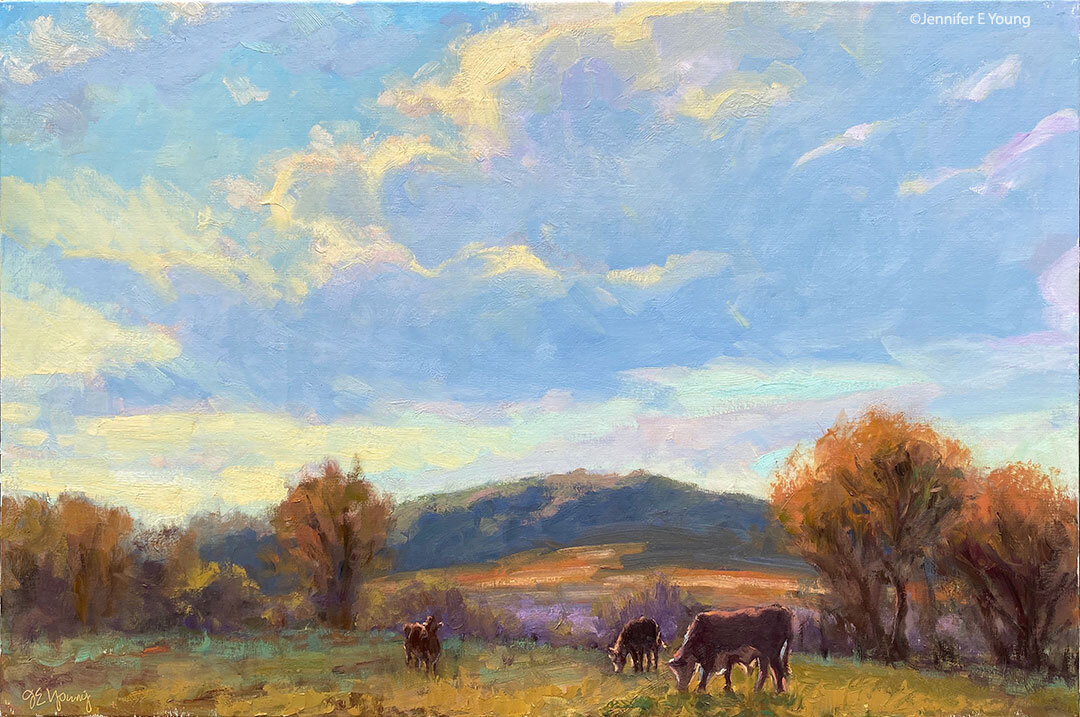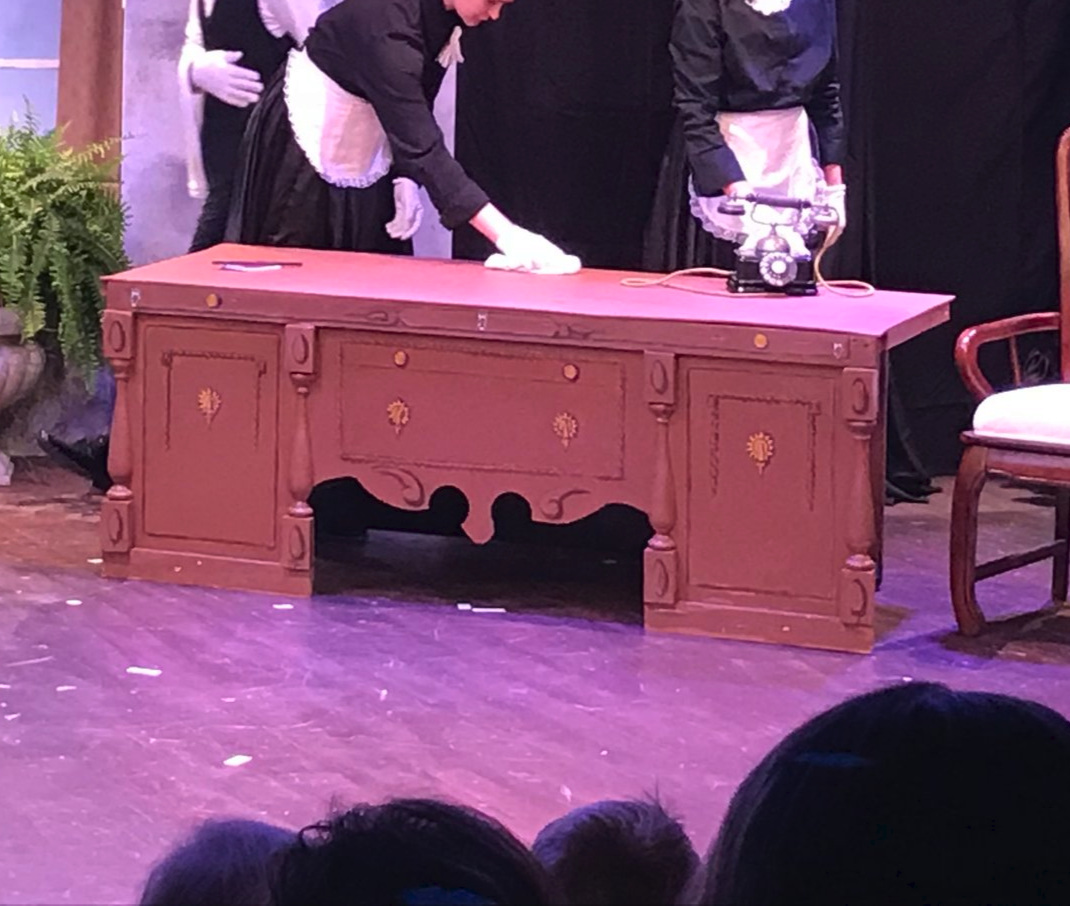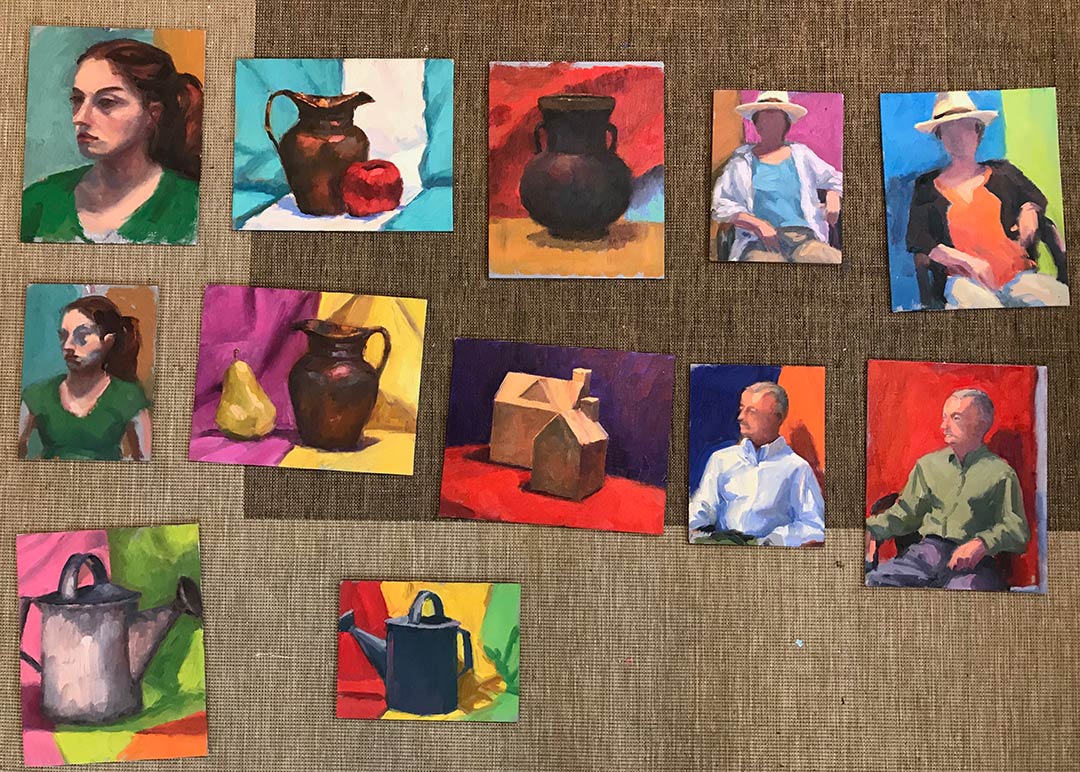My oil painting technique... A few Q's & A's
/From time to time I will get questions from fellow artists about my approach to oil painting, so I thought I'd share some recent ones here on the blog, in case there are others who might have the same concerns: Q: How do you keep your colors clean painting in oil? Do you clean the brushes stroke after stroke? Do you wait for one coat to dry before applying a thicker one?  A: The best way to do this is to lay a stroke down and leave it be. I like to mix my paint on the palette with a palette knife in the studio, rather than mixing it around with my brush. When I paint en plein air, this isn't always the case, but starting out in oils I recommend it for keeping colors clean. Also, yes, clean your brushes often and wipe with paper towels. You need to have enough paint on the tip of your brush. Most beginners in oils don't do this and lay down a thin stroke, then see they didn't get the right effect and so try to paint over and over it a few times, giving a smeared, muddy effect. If you need to test the paint mixture to judge color notes or values, just dab a bit of paint on the canvas with your palette knive to test before laying on a bunch of paint.
You can paint either using a direct method or an indirect method. I paint using a direct method, where I am laying paint rather thickly on canvas, sometimes doing it all "alla prima" (at one go) for smaller canvases, or in consecutive sessions for larger canvases. You can use a painting medium like Galkyd or Liquin, which speeds the drying and increases fluidity. There are also impasto mediums that help the paint sit up thickly and "stay put". But if you use these, use them sparingly or else it compromises the stability of the paint.
I saw Ken Backhaus and John Budicin demoing in oils recently and neither of them used any medium at all. They just laid the paint on pretty thickly and left it be. It does take some practice to do this, though, and some confidence in handling your brushwork.  Indirect painting is approached differently, using glazes that build up through layering. With this method you WOULD let the painting dry to the touch in between sessions, painting thinly and gradually building up the paint layer. The rule here is to pain "fat over lean", meaning paint thick over thin, oily over less oily. Lots of portrait painters use this indirect method, which gives a beautiful luminous quality to translucent passages such as skin.
Q: How do you keep your deep dark values clear cut separate from your light? That goes for structures as for skin tones.Â
My dark passages and shadow areas are generally painted a bit thinner than highlighted areas. I leave the impasto (thick, raised paint) for highlights, which are naturally going to be more opaque because of the addition of white paint used in the mixtures.
The best way to keep your darks clean is to not move your paint around so much on your canvas once it's down. Think in terms of laying the paint down rather than smearing it around. Also, to keep darks dark, you can lay them in first and then lay in impasto highlights after. If you do it the other way around the light, which usually includes white will muddy and lighten the dark . If you do need to darken something, wait until the paint "sets up" a bit and becomes at least tacky to the touch before going back in with dark over light. If you've worked in watercolor before, this will be the exact opposite approach to watercolor!

 In my opinion it is a good idea to try and mix your own greens as much as possible. It is easy to spot a painting that uses a lot of out-of-the-tube greens. It's not that tube greens are bad (and I definitely carry at least one when I paint en plein air because of the need for speed.) But painters can become over-reliant on them to the point where the same green is used for everything (trees, grass, shrubs, etc.) and the painting lacks nuance or variation.
In my opinion it is a good idea to try and mix your own greens as much as possible. It is easy to spot a painting that uses a lot of out-of-the-tube greens. It's not that tube greens are bad (and I definitely carry at least one when I paint en plein air because of the need for speed.) But painters can become over-reliant on them to the point where the same green is used for everything (trees, grass, shrubs, etc.) and the painting lacks nuance or variation. .
.

















